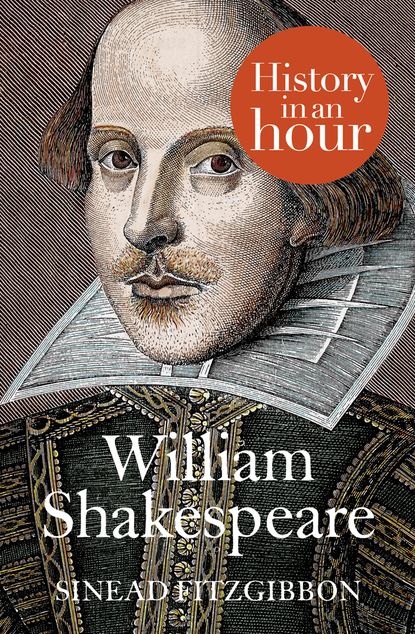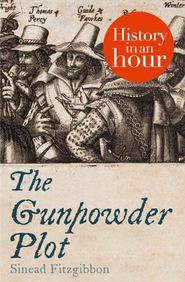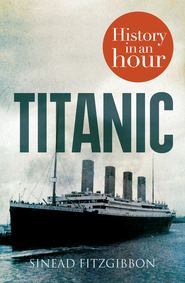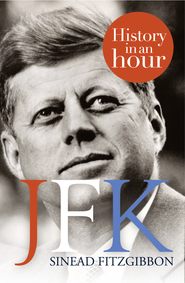По всем вопросам обращайтесь на: info@litportal.ru
(©) 2003-2024.
✖
William Shakespeare: History in an Hour
Настройки чтения
Размер шрифта
Высота строк
Поля
Assuming his parents followed the conventions of the day, young William would have been sent to school around the age of seven. No educational records survive, but it is likely he would have attended the local grammar school, King’s New School, which accepted any boy from the town, provided he had rudimentary reading and writing skills. By this stage, Shakespeare’s father was fast becoming a respected member of the Stratford community, taking on a series of municipal jobs which would eventually see him rise to the post of chief alderman of the town. The increasing stature of the Shakespeare family makes it even more probable that King’s New School would have opened its doors to William.
Aside from its famous alumnus, King’s New School is remarkable for having a very highly paid headmaster – the records show that he drew a salary of £20 per annum, a significant sum for the time, and, it is believed, more than the remuneration received by the headmaster at Eton. This suggests that King’s New School was a decent educational establishment, and the instruction the boy received was likely to have been better than average.
The sixteenth-century curriculum was very unlike its equivalent today. The core subject was Latin, and students would have spent most of the twelve-hour school day learning to write, read and speak this ancient language. There was little or no emphasis on other subjects – history and geography were both neglected, as was English, which could account for the infuriating lack of uniformity of spelling in Elizabethan literature.
If we continue with the assumption that young Shakespeare followed the custom of the time, he would have left formal education – furnished with fluent Latin but not much else – by the age of 15. At this point, c. 1579, he disappeared from the records completely for three years. We know he did not attend university like most of his fellow playwrights; a fact which Ben Jonson highlighted when he commented, somewhat derogatorily, that Shakespeare had ‘small Latin and less Greek’. So, what was his occupation during this time? Did he remain in Stratford, or move to London? Or did he travel even further afield? Unfortunately, we have no idea, as there is little evidence to support any speculations to the contrary.
The Family Years (#u8d9a6ea7-db8c-5f0b-baaa-b703f5b25cae)
When we next meet William Shakespeare, he is 18 years old and (presumably) in love. It is November 1582, and he has travelled the thirty miles to the town of Worcester to apply for a marriage licence. The register lists his intended bride as one Anne Whateley, a detail which has caused no small confusion among historians, because the wife he ended up with was called Anne Hathaway. This discrepancy probably should not necessarily be taken as proof that William was fickle in his affections, casting off one Anne in favour of another in a matter of weeks. The far more likely explanation is that the clerk at Worcester simply made an error while recording the bride’s surname.
The (probably incorrect) entry in the Worcester register
The next reference to the impending nuptials can be found in the marriage bond, in which Anne Hathaway now appears correctly as herself. The existence of this document is particularly interesting. Usually, weddings could only take place after the marriage banns were read aloud at the local church on each of the three preceding Sundays. This practice allowed time for interested parties to raise objections should they have any. But a marriage bond, usually issued by the bishop and at considerable cost to the applicant, granted permission for a couple to by-pass this convoluted process and marry as soon as they wished. Given that Shakespeare paid £40 to receive this licence, it would seem that he was in quite a hurry to get himself wed. Sure enough, the nuptials took place that same month after just one reading of the banns. Six months later, Anne gave birth to the couple’s first child, a daughter called Susanna.
There has been much speculation about the nature of Shakespeare’s marriage to Anne Hathaway. It has often been attested that Shakespeare was, on account of Anne’s pregnancy, forced to marry against his will, and that the union was therefore an unhappy one. Anne’s age – at 26 she was a full eight years her husband’s senior – is also seen as significant by those who believe that the young Shakespeare was coerced into matrimony by an older woman, desperate to avoid a life of spinsterhood. Some 20 per cent of women in Elizabethan England would go to their graves without marrying, so such a proportion would have intensified competition for men. On the other hand, this also means that a 26-year-old single woman would not have been rare or any great social shame. In any case, while such an age difference was unusual for the time, neither was it unheard of.
In reality, the only thing we can know for certain about the workings of the Shakespeare–Hathaway marriage is that we know nothing for certain. While their parents appear to have been acquaintances since the 1550s, we do not know how long the couple had known each other, or if they had had a longer engagement than their hurried marriage seems to suggest. Neither do we know anything about the dispositions and personalities of husband and wife, nor have we any insight into their attitude to the institution of marriage. And while the fact that Shakespeare would ultimately spend much of their married life living and working in London is indicative of a certain mutual independence, it should not necessarily be taken as evidence of an emotional estrangement. At any rate, relations must have continued to some degree in the first years of their marriage as, in late January or early February 1585, Anne gave birth to twins, Judith and Hamnet.
The Jack-of-All-Trades (#u8d9a6ea7-db8c-5f0b-baaa-b703f5b25cae)
Following the birth of the twins, we once again lose sight of William Shakespeare, this time for a period of seven years. When he next makes an appearance in his own story, it is 1592 and, at 28 years of age, he is no longer living in Warwickshire but in London. Again, we have no idea how the young father occupied his time during these so-called ‘lost years’, but nonetheless there have been various attempts to fill this gap in our knowledge. If the numerous theories are to be believed, Shakespeare was a highly adaptable polymath who was at once a schoolteacher, a poacher, a soldier, a traveller and a lawyer. There is scant evidence to support any of these suppositions, although recent investigations suggest the schoolteacher hypothesis is by far the most credible.
Nor do we have any insight into what influenced his decision to abandon his country roots and head for the overcrowded capital city. Perhaps it was the pressures of providing for his growing family, or simply a desire to make a name for himself beyond the provincial town of his birth. Whatever the reason, turn up in London he did, and by 1592 he was already ruffling some feathers in the theatre world, as evinced by a pamphlet published that same year by a man named Robert Greene.
In addition to being a poet and a keen pamphleteer, Greene was a leading light in the University Wits, a group of late-sixteenth-century Oxbridge-educated writers whose number also included the likes of Christopher Marlowe, Thomas Nashe, John Lyly and George Peele. He was also close to death, and very ill-tempered. So ill-tempered, in fact, he took advantage of his impending demise to issue two pamphlets which were ostensibly a collection of his observations on life, but which were in reality nothing more than barely disguised potshots at his fellow writers.
The first pamphlet, which was called Greene’s Groat’s-Worth of Wit, contains little of interest to the common modern reader – with the exception, that is, of this one sentence hidden away in a forest of purple Elizabethan prose:
There is an upstart Crow, beautified with our feathers, that with his Tygers heart wrapt in a Players hide, supposes he is as well able to bombast out a blank verse as the best of you; and being an absolute Iohannes fac totum, is in his own conceit the only Shake-scene in a country.
This rather catty comment is clearly taking a swipe at some ‘upstart’ actor (or ‘player’), who, despite being nothing more than a jack-of-all-trades (‘Johannes fac totum’), believes himself to be a better poet than his university-educated counterparts. But how do we know this jibe was aimed at Shakespeare? Apart from the obvious allusion to ‘Shake-scene’, the ‘tygers heart wrapt in a players hide’ is a direct reference to Henry VI, Part III, which includes the line, ‘O tiger’s heart wrapped in a woman’s hide!’
This is important in a number of ways. Not only is it the first time we come across William Shakespeare in London, it is also evidence that by 1592 he was quite well established there, having worked as both an actor and a playwright. It also proves the Henry VI plays were among the first of the Shakespearean canon to be written. And so, quite unwittingly, the cantankerous Greene has done the ‘upstart’ a great favour – without his splenetic death-bed ravings, our knowledge of Shakespeare’s movements during the early 1590s would be much the poorer.
Frontispiece of Greene’s pamphlet
But just as the man from Stratford had begun to garner attention for his theatre work, his dramatic career was brought to a rather abrupt halt. In June 1592, a particularly virulent outbreak of plague hit London. As was common practice at the time, the city authorities ordered the closure of all theatres in an attempt to prevent the contagion spreading among the already beleaguered population, an order which remained in place until June 1594.
During this enforced two-year sabbatical, Shakespeare turned his attention to poetry, writing his two long narrative poems, Venus and Adonis and The Rape of Lucrece. While this foray into poetry may well have been a welcome creative outlet for him, the poems also served a more practical purpose – in the absence of income from the theatres they earned the writer some much-needed money. These poems, both commercially successful, were dedicated to Henry Wriothesley, the Earl of Southampton, which suggests that, for the first and only time in his twenty-five year writing career, Shakespeare sought (and presumably received) aristocratic patronage.
The Lord Chamberlain’s Men (#ulink_d5ad9e2c-30c0-50c5-b277-1fd5f433dcca)
Despite the demise of a number of acting troupes during the plague years (and the death of the country’s leading playwright, Christopher Marlowe, in 1593), the re-opening of the playhouses in 1594 heralded a golden age of theatre.
One of the driving forces behind this explosively creative and innovative period in theatrical history was a players’ company called the Lord Chamberlain’s Men. This troupe was established in 1594 under the patronage of Henry Carey, the Lord Chamberlain. Aside from a retinue of part-time actors, carpenters, seamstresses and other hired hands, the Lord Chamberlain’s Men had a core of eight ‘sharing’ members, who would receive a share of any profits earned, while also remaining liable for any debts incurred. Their number included the leading actor of the day, Richard Burbage; his father, and the actor-manager of The Theatre playhouse, James Burbage; William Kemp, the company clown who would play most of the comedic parts; and the up-and-coming playwright, William Shakespeare. The latter’s inclusion in the company was highly unusual for the time – normally, the sharers would be made up of actors only, while playwrights tended to work on a freelance basis, writing for any company who wished to buy their services.
That Shakespeare was accepted, at 30 years of age, as one of the eight founding ‘householders’ was a testament to the esteem in which he was held by his colleagues. It was also a savvy business decision on their part. Thanks to the talents of their in-house dramatist, whose works would henceforth be staged almost exclusively by them, the Lord Chamberlain’s Men not only succeeded, but flourished. The plays of William Shakespeare were popular and attracted large audiences – sometimes up to 2,000 paying customers per day, a figure which equated to about 1 per cent of the city’s total population.
And while the company undoubtedly benefitted from its association with Shakespeare, that the playwright chose to remain with the Lord Chamberlain’s Men for the entirety of his career suggests that he was also happy with the arrangement.
The King’s Men (#ulink_a8886614-f769-56e6-8317-63a9ecfabc17)
Ultimately, this loyalty would pay off – and not just in financial terms. As early as 1594, the company had begun to garner royal recognition. Court documents from that year record payments to Shakespeare and two other members of the Lord Chamberlain’s Men for ‘two several comedies or interludes showed by them before Her Majesty [Queen Elizabeth] in Christmas time last’. This royal seal of approval would endure; when James VI of Scotland succeeded Elizabeth to the throne in 1603, the new king granted his patronage to the company. From that time, they were no longer known as the Lord Chamberlain’s Men, but now boasted the somewhat loftier title of the King’s Men. Such was their elevated status that Shakespeare and his colleagues attended James’s coronation in 1604, decked out in the king’s livery which had been made especially for the occasion from four-and-a-half yards of scarlet fabric.
The end of the Tudor dynasty had given new hope to the country’s beleaguered Catholics, many of whom were optimistic about the possibility of the new Stuart king relaxing restrictions on the practice of their Roman religion. This hope stemmed from the fact that, although James himself was raised in a strict Calvinist tradition, his mother was the Catholic Mary, Queen of Scots, whose execution at the hands of Elizabeth had cast her in the role of Roman martyr. But when James ultimately proved disinclined to improve conditions for Catholics in his realm, religious hostility reached boiling point once again. The failed Gunpowder Plot of 1605, which saw a band of Catholic rebels conspire to blow up the king and his Parliament at Westminster, was the unhappy result.
When Guy Fawkes, the first of the Gunpowder Plot conspirators to be captured, was brought before the king for questioning, he brazenly declared that it had been his intention to blow James and his Scottish court all the way back to Scotland. This statement hinted at an underlying xenophobia against the Scottish, which went beyond the question of religion. If, indeed, Fawkes did hold such a prejudice, he was not alone – given the long and fraught history between the two countries, many of his fellow English were far from happy to find themselves the subjects of a Scottish monarch. Understandably, the authorities were not prepared to tolerate any form of anti-Scottish sentiment, and strict controls were placed on the content of plays; it was the brave Jacobean playwright who dared to satirize the Scots too overtly, as such an offence could be viewed as seditious, if not treasonous.
But censorship aside, James I was a great fan of the theatre. During his reign, the royal family awarded its patronage to a number of theatre companies, in addition to the King’s Men. Theatrical performances, always a favourite at Elizabeth’s court, more than doubled in number during the early Jacobean period. The tastes of the new Royal Court had a marked influence on the works the playwrights produced. While Elizabeth had preferred comedies, the Stuart king and his entourage had a taste for tragedy – it is interesting to think that, in part at least, we have a king’s whim to thank for the existence of such enduring and powerful plays as King Lear, Macbeth and Othello.
The Wooden O (#ulink_fabd8d0b-bcaf-5f26-aff1-bc0e40063d16)
Can this cockpit hold
The vasty fields of France? or may we cram
Within this wooden O the very casques
That did affright the air at Agincourt? (Henry V)
However, in spite of its commercial success and its eventual receipt of monarchical approbation, the company’s future had not always looked so rosy. During the first three years of its life, the Lord Chamberlain’s Men had operated out of The Theatre playhouse, which was situated in Shoreditch. As only the second custom-built dramatic arena in London, The Theatre’s construction was relatively rudimentary; roofless and roughly circular in shape, the building consisted of three wooden galleries surrounding a cobbled yard. Entry to the yard, which provided standing room only and which left the spectator at the mercy of the elements, was a penny. Two pennies would buy access to the galleries, while a further penny would purchase the comfort of a stool or cushion. Considering a day’s wage for the average Londoner was only about twelve pence, the few hours of escapism offered by William Shakespeare’s plays came at quite a cost.
Вы ознакомились с фрагментом книги.
Приобретайте полный текст книги у нашего партнера:
Приобретайте полный текст книги у нашего партнера:









